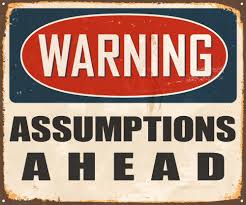Why paying customers are the only people worth talking to

There’s a good reason savvy investors want to know if you have paying customers. They want to know if real money has changed hands.
When I read reviews of restaurants and hotels, I give little credence to the review if the writer has not paid out of their own pocket. Sure I can enjoy the writing and the pictures but if no money changed hands, their opinion about its value for money is totally meaningless. The review is not a true reflection of the commercial exchange that took place.
As a researcher, I do the same. Anyone’s opinion about a product or service, anyone making comments or endorsements about how great it is – management, product champions, investors, focus groups, quant research, market experts and commentators – get largely discounted (but not ignored) from our sampling. What we look for is real customers who invested time and money into the process of evaluating and buying one product or service at the expense of another. That’s the only truth worth understanding – everything else is subjective noise.
Why your team needs to know your customers’ job description

A piece of hardware, say an interactive whiteboard, is a tool that aids a customer do whatever it is they want to do. In a sense, they’re ‘hiring’ it to perform a job they need doing. Most technology businesses don’t market like that at all, rather they focus on market sectors like Corporate, Public and Education and not behavioural segments. And having worked in this space for a while, I know, that the market splits in many segments hiring IWB’s for very different jobs indeed.
If you don’t know what the job is, you’re likely to talk to the sector about your differentiating product features and compare performance against your competitors. Your benefit messages involve value propositions like “improved collaboration, audience engagement and team working”, all evidenced by case studies, white papers. and social media campaigns. And with glossy communications and wily sales skills, you incentivise the channel to shift your boxes. Is that an accurate picture?
Customers on the other hand struggle to understand this approach because it doesn’t speak at all to their context of use. They put the work in to work it all out and reach their own conclusion about which tool performs best. If you’re (lucky) to be chosen, they won’t necessarily tell you why, they expect you to know. In fact they expect everything you do – hardware and software developments, customers services, tech support – to add value to the job they use it for. But if you don’t know, you support them well, harming your reputation and impeding your growth.
One easy way to grow is to find out what jobs your customers are performing with your technology. Specifically, ask them for their job description and get them to describe how, where and when they use the technology in that context. Once you know, everything will become clear to your team about how to grow your share of the market.
Uncovering hidden value

“Price is what I pay, value is what I get” is how Warren Buffet neatly explains the two sides of a value exchange. The share-price of Berkshire Hathaway is testament to his supreme ability at doing this very well.
The secret of his success is, in part, due to his ability to find businesses with whom customers have strong relationships. But that’s not just about understanding the service provided and the return it achieves; its about understanding the ultimate value customers derive , as it they who drive the return.
This is an unusual talent most people don’t have. Without this knack, the value derived by customers is largely hidden, either because customers are too distant (eg sell via distributors or resellers) or because they don’t care to find out. That’s not a problem so long as our backers get the return they want but if they’re not, its an essential thing to know.
Three reasons why: Firstly, if you know what value customers get, your investments in product developments and marketing will engage them far more saliently; secondly, you’ll fend off competitors much easier when customer identify you with things they value; and thirdly, when you get known for this, your business becomes more resilient in the longer term.
All of these are characteristics Buffet values. To become like a firm he might buy, all you have to do is to take the time to identify what’s the other side of the exchange, what drives the return. It leads to much happier exchanges for everyone.
What job does your tool perform?

Your product or service is only a tool customers hire to perform a job. As Theodore Levitt once said, “people don’t want quarter inch drills they want quarter inch holes”.
So what job does yours do? This is perhaps the most important question you need to answer, as it not only defines your strategy but it focuses your people and resources much more effectively in the market. Furthermore, it is what positions you in the market, as your tool becomes identified with particular types of job(s) customers need to perform. (Tip 1: Your positioning is not what you think it is but only what customers associate you with).
So how do you define what job your tool performs? The common mistake is to describe the category of product or service you and your competitors are in. One example I researched recently was a “Social Collaboration” software business. Yes, this describes to staff and investors what ‘space’ the business is in and who its immediate competitors are. But it didn’t describe the job customers hire “social collaboration” software for and how well this particular firm performed in this context. In fact, customers were confused by the use of the word ‘social’ and ended up describing something completely different. Such gaps in understanding meant this particular firm was struggling to grow.
But ask customers and they’ll describe the specific reason they need a tool like yours,, the context of its use, the value they seek, what the competitive frame really is and how your brand stacks up. Their happiness is entirely driven by your tool’s success at helping them perform the job. When the Social collaboration business saw themselves as customers did, they fundamentally changed how they went to market. Because it is only by seeing your business as customers do, that you can grow your value ion the market.
What my local Caffe Nero teaches us about customer segmentation

You can treat your customers the same because they all buy your service, right? And its easier for your operations if you do so why make it more complicated? Because finding and keeping customers gets a whole lot harder if you do
Take Caffe Nero as an example. It’s the coffee and the italian experience customers love and so, to maintain or grow their business all they need to do is keep doing what they’re doing: hire young italian barista’s, offer uncomplicated food and drink choices and operate in easy to access high footfall locations.
That’s one way to look at it and works for most. But looking at your customers as homogenous group defined by their appetite for your product is not a smart way to think about customers. Just go into one and observe who’s there. The longer you stay, the more you’ll recognise their differences
- The office worker picking up a latte on the way to work
- The mothers getting together after dropping the kids off at school
- The recruitment consultants in the corner who spend all day there interviewing candidates
- The out of town consultants meeting colleagues
- The secretaries picking up sandwiches for their team
I could go on but you get the point.
Each of these types exhibit peculiar behavioural characteristics based on the job they are hiring Caffe Nero to perform for them. Their time constraints are different and so some will not come in at all if there’s a queue whilst others won’t mind; the product mix they buy varies enormously between groups as does their average spend. And they value facilities completely differently (loos, free broadband, quiet areas, sofas or chairs etc). Crucially, each group has a competitive frame which may not involve a coffee shop or spending money (they could t the office or home, at my club, hotel lobby etc).
This is the same for every business: customers are not the same and if you want to keep them and/or find more, you’ll be more effective thinking of them as behavioural segments not product users. And by doing so, everyone in your team will understand the part the can play to engage customers much more saliently.
Happy customers, fulfilled staff, better returns for backers. Sounds like a happy exchange to me.
Learn the lingo

Entering a new market is a bit like moving to a foreign country. To make a success of it, you need to learn the language, understand customs and find your place in their world.
Few technology businesses go to market like this. They look at markets through the lens of their technology and hire translators to help find the way. But without a clear focus, people tend to get lost as well as the translation. So the technology doesn’t get adopted fast enough and investors lose their money.
Customers can tell you everything you need to know about your place in their world; you just need to find out. They’ll show you where to invest resources and the people you need to know. They’ll even teach you the dialect they speak.
So when entering a market, make the effort to understand the locals point of view. It’ll speed you on your way.
Kick ass

Everyday, management teams base investment decisions on a whole load of assumptions. What should we invest in? What do customers value? How do we improve our market positioning? What’s our value proposition and how do we take it to market?
However bright, capable and experienced your team is, the answers don’t come easy. Subjective assumptions roll around the board room so everyone has a good old argument about what to do. Sales, marketing, customer services, ops and finance weigh in with competing voices, opinions and egos. The best you can do is listen, referee and try to find the middle that keeps everyone happy, including the customer.
The customer can tell you the answer. With their perspective at the table you can eliminate subjective assumptions from the conversation and make better decisions. Everyone would start with a clear idea as to where you, your product and your service really stands in the market, what customers value and how they see your strengths and weaknesses. Sure there’ll be still arguments but at least everyone will be fighting for the good of the customer using hard data rather than soft opinion.
Remove assumptions from your daily conversations to make real strides in market performance. Kick assumptions into touch and find out where you really stand. It’s what your customers want you to know.
How well do you know your customers?
Take a moment to watch this brilliant Guardian newspaper TV advert from the 1980’s.
Do you misunderstand your customers in the same way? Its easy to do isn’t it – observe someone’s behaviour, apply subjective biases and reach the wrong conclusion.
Figuring out others is, as it turns out, incredibly hard, even people with whom we have longstanding relationships. But worse, we believe our judgement about others is far better than it actually is.
“There is nothing you can tell me about my customers”. But the truth is, you don’t know what they say when you’re not in the room. How does your offer compare against others?; why did you get chosen (or not)?; what are your strengths and weaknesses? In short, you think you know them but the truth is, you only have half the picture.
Most organisations see their market through the lens of their service or product. If you took a moment to look at your business from the perspective of your customers, you’d get a totally different point of view. And with their voice ringing in your ears, you’re business would do a far better job at serving them. Steve Jobs once said, ‘we start at the customer and work back to the technology’. Is it time you did the same and got to know customers better?
What’s wrong with election polling and how to make it more accurate

The 2015 UK general election results left pollsters with egg on their face as every poll they did prior to election day proved to be wrong, very wrong. And not for the first time either. So why do polling companies continue to use such ineffective methods?
The problem they face is that asking people to articulate future voting intentions is flawed as many people just do not know how they will behave in the future or, alternatively, won’t tell you. Either way, those involved in collecting such information are using lazy and outdated methods to capture nonsensical data. A waste of time and money.
The exit poll results, released just before 10pm on the night of the general election, were based on actual behaviour in the voting booth. This poll was the first, accurate indicator of what the result would be because it did not force people to articulate the future but simply recall the very recent past.
Even then, this exit poll, turned out to be short of the mark, failing as it did to predict the conservative party’s majority. It turns out that even in such circumstances, some people simply didn’t want to share such information.
It takes hard work to understand others. The business model of polling organisations is fixated on cheap, quantitative methods to collect information quickly, from large, robust samples of the population. The problem however is that such methodologies fly in the face of modern psychology and defy logic and common sense.
Large scale qualitative data collection takes longer, is more expensive and data is much harder to analyse. But if polling organisations had used such methods, they would have shown that whilst there are die-hard segments who would never vote for any other party there are a great many people who take the decision in the polling booth. Understanding the emotional state of these people would have provided more valuable insights into their voting intentions than asking them who they would vote for. For instance, undecided people’s feelings about the incumbent party would have revealed a “better the devil you know” attitude and a sense of loss aversion when faced with alternate options.
Customers are no different. Asking them to talk about future decision making is just as much a lottery. But getting to know them, understanding their feelings and concerns is a far superior way than cheap and lazy questions. But alas, organisations like politicians seem committed to using tools that are far from accurate and often totally misleading.
If insanity is repeating the same behaviour yet hoping to achieve a different result, perhaps its time to change the methodology.
Was Tesco and Sainsbury’s decline predictable?
Lidl and Aldi have stolen a dramatic share of the UK supermarket business over the past few years and this month announced they now had 10% share between them. But should Tesco and Sainsbury’s have seen this coming? I think so.
And the most important lesson can be summarised thus: just because customers shop with you today doesn’t mean to say they are happy about it.
Over the decades there have been a plethora of studies about how people actually feel about supermarkets. Large proportions claimed to be unhappy about various aspects of their operations and mistrustful of their communications. For instance in the Guardian/ICM poll of 2006, 83% agreed that supermarkets make shopping simpler and cheaper but despite that, many had major concerns:
- 70% thought big stores harm small food producers
- 80% of pensioners feared their power.
- 74% were sceptical about healthy or low calorie food labelling. Only 31% trusted their labelling
- 78% of women said junk food ads aimed at children should be regulated
- 72% worry about food quality
What’s important here is that supermarkets are part of a wider circle of long-term social concerns that really matter to people. And it is this wider context that ultimately drove their loyalty. So whilst they seemed like they were happy, they didn’t feel good about it.
When Lidl and Aldi appeared in the market with their crucial price advantage, customers did not immediately leave in droves – the incentive to change was still not strong enough for many people. But the 2008 financial crisis put paid to all that and then the flood gates opened as customers acted on their true feelings. Yesterday it was announced that Lidl and Aldi now had 10.7% of the UK grocery market whilst Tesco and Sainsbury’s prospects have been severely dented in then process.
The cautionary tale is this: do not take your customers for granted, stay in proper touch with how they really feel, understand your own responsibility for this and don’t let success today blind you to the reality that keeping customers for long in a competitive world is very hard.
Francis Wyburd is Guide @whereyoustand, the “hidden voice of the customer” insight business
Copyright 2015, all rights reserved


 Follow
Follow